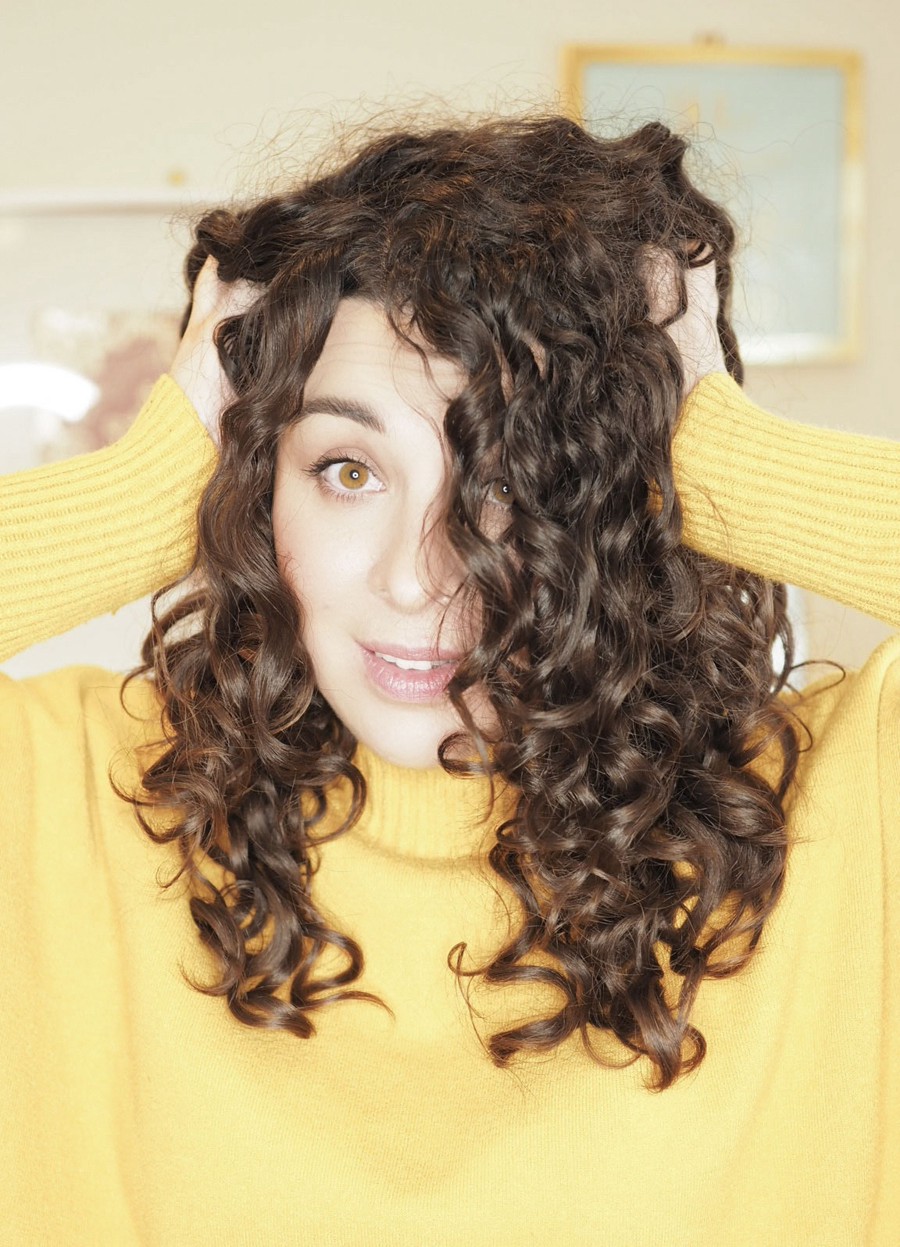Knowing your hair porosity is one of the most important factors when it comes to buying products that will work. Especially when you’re starting the Curly Girl Method. When most people start their curly journey, they frantically try to determine what curly type they have. In a recent post, I spoke about why your curl type doesn’t matter. Hair Porosity does! Think of your hair porosity the same way you would think of skin type: oily, combination, normal and dry. You don’t shop for skincare products based on skin colour or face shape, you shop according to your skin type. The same principle applies when it comes to shopping for your hair care. Shop according to your porosity. There are three types: low, medium (aka healthy) and high porosity.
What is Hair Porosity?
Determining your hair porosity is often key to discovering what products will and won’t work for your hair. So knowing which type you have can save you money, time and frustration. But what is it? Porosity refers to you hair’s ability to absorb and retain moisture. The cuticles of the hair shaft determine this. For the most part hair porosity is genetic, but factors like heat, chemical and environmental damage can all have an impact. Porosity does not depend on race, climate, hair length or curl pattern.
Low Porosity Hair Characteristics
-
Hair takes a long time to get fully saturated because it naturally repels water.
-
Hair dries quickly. Again, because the hair repels water.
-
Difficult to hydrate.
-
Products tend to build up on the hair, rather than absorb into the hair shaft.
-
Natural oils don’t readily penetrate, but rather sit on your hair usually making low porosity hair quite dry and coarse.
-
Difficult to chemically and colour treat, especially highlights. Low porosity hair doesn’t take colour well.
-
Hair can appear dull or shiny, it depends if there’s buildup.
-
Prone to product build up because products can’t penetrate the hair shaft.
-
Less prone to breakage and split ends.
-
Regular clarifying washes are required to remove build up – see this post for more info on clarifying.
-
Hair doesn’t tend to have much elasticity or volume.
-
Lightweight products such as gels and mousses work better than curl creams and butters.
-
Gentle clarifying shampoos/lo poos are great for low porosity hair.
-
You need heat to help open up the cuticles, so moisture and product can penetrate the hair shaft.
-
Regular deep conditioning using thermal heat caps is essential for deep conditioning! You can purchase Curl Maven Thermal Heat Caps from my shop.
-
For best wash day results, use warm/hot water and apply products to soaking wet hair, when the cuticles are open.
-
Use light oils such as argan, grapeseed, mongongo and jojoba.
Low Porosity Protein Myth!
There’s a theory that low porosity hair types should avoid using products that contain protein, or doing protein treatments. That’s simply not true, and misinformation. Our hair is made of protein, all hair is. Every hair type needs protein! That’s like saying short people don’t need to drink water, but tall people need to drink lots of it. We all need to drink water, we are all made primarily of water. Same with hair and protein, all hair needs protein, because it’s made of protein.
Medium Porosity Hair Characteristics
-
Hair in its most natural, healthy state is medium porosity.
-
Usually full of bounce, volume and elasticity – provided the right products and techniques are used. See this post if you’re struggling with root volume.
-
Hair doesn’t take too long to get wet, or too long to dry.
-
Requires less maintenance and effort in choosing which products will/won’t work.
-
Easily absorbs and retains moisture inside the cuticle.
-
Easier to maintain a healthy protein moisture balance – see this post if that’s something you’re struggling with.
-
Holds styles well and can be colored with good results.
-
Lightweight products work best, but you can use curl creams provided they’re not loaded with cheap quality, heavy oils and butter.
-
Lo poos work great on medium porosity hair, or lightweight cleansing co-washes.
-
Occasional clarifying washes are good practice, but not required as regularly as low porosity hair.
-
Hair looks and feels healthy with lots of shine.
-
Minimal breakage and split end.
-
Use light oils such as argan, grapeseed, mongongo and jojoba.
High Porosity Hair Characteristics
-
Hair easily and quickly absorbs water because it’s so highly porous.
-
Hair takes a long time to dry. Often taking hours, or even a day or so if drying naturally.
-
If your hair is coloured, highlighted, or chemically treated, the damage caused during these processes causes hair to become high porosity.
-
High porosity hair absorbs and takes colour really well because it’s so porous and thirsty, it drinks the colour up.
-
Can’t retain moisture so hair is often dry.
-
High porosity hair loves and needs protein.
-
Hair is often frizzy – check out this post on how to beat halo frizz.
-
Hair gets tangled easily.
-
Most prone to breakage and split ends.
-
Regular deep conditioning, with a balance of moisture and protein. Moisture because hair porosity hair is dry, protein to repair the damage and heal the hair.
-
Do cold water rinses to close the cuticle.
-
Cleansing co-washes are great for high porosity hair, with occasional clarifying, lo poo shampoos.
-
Use sealing oils and products to seal moisture into the cuticle after styling.
-
Well-formulated shea, coconut and mango butter can be good for high porosity hair.






